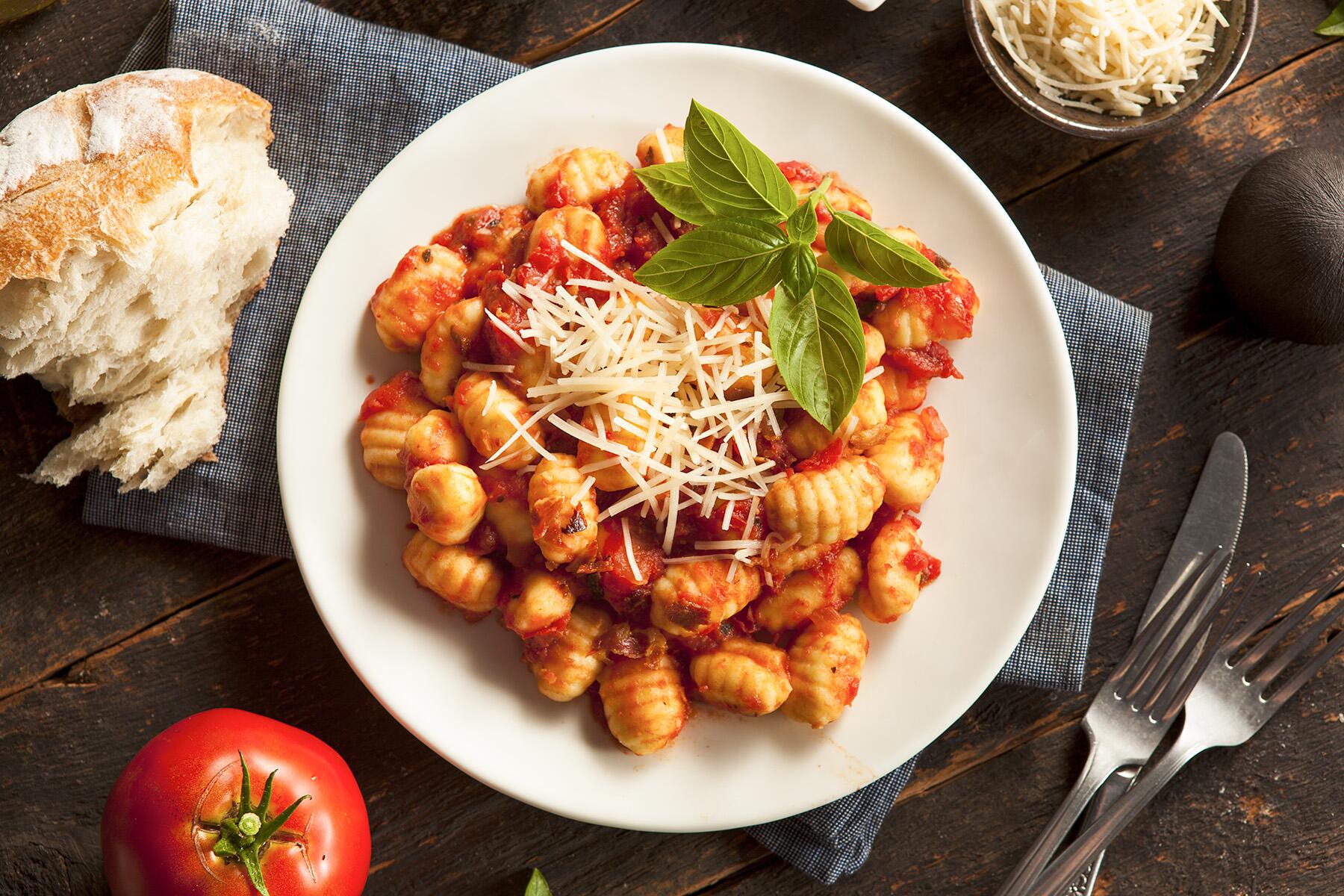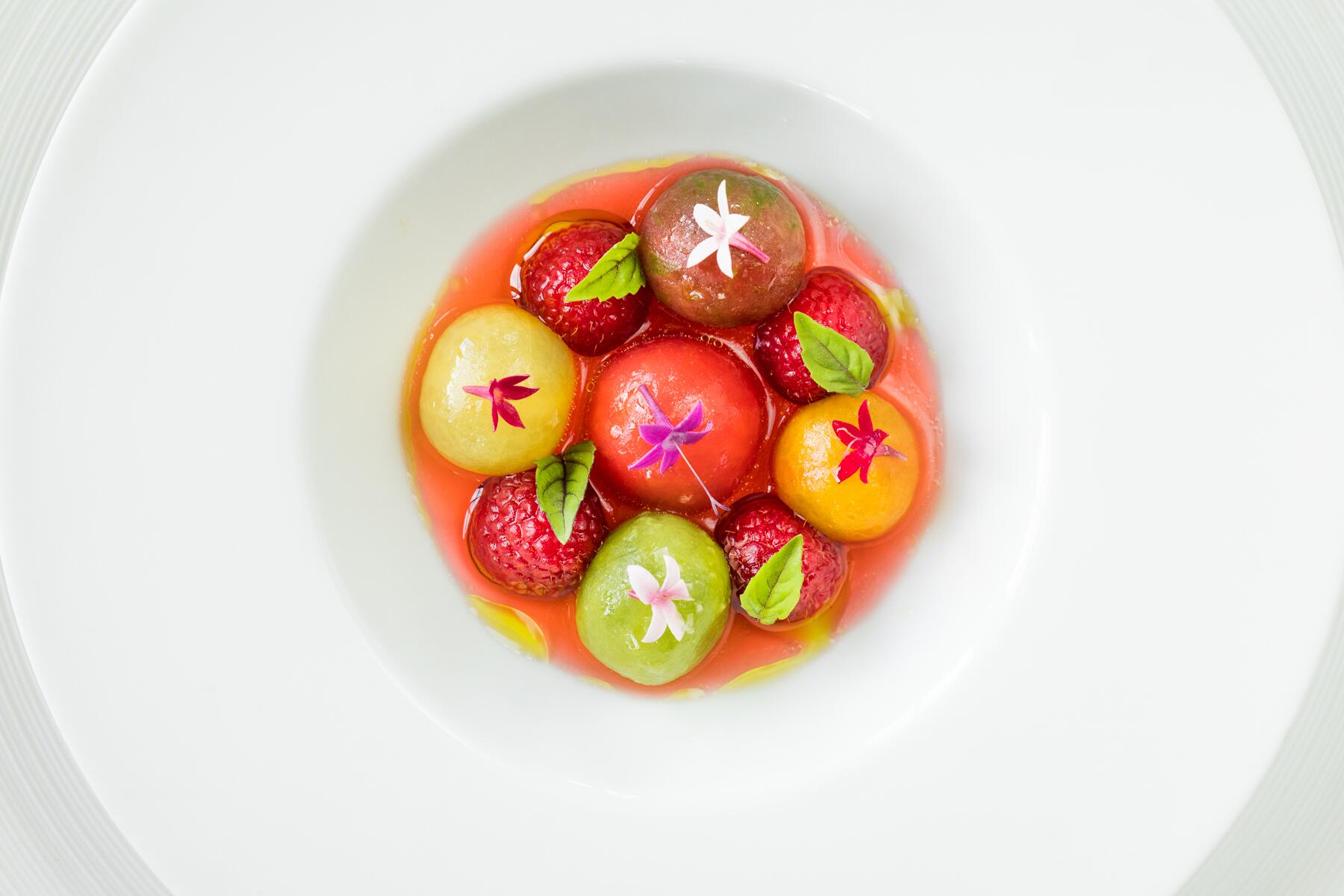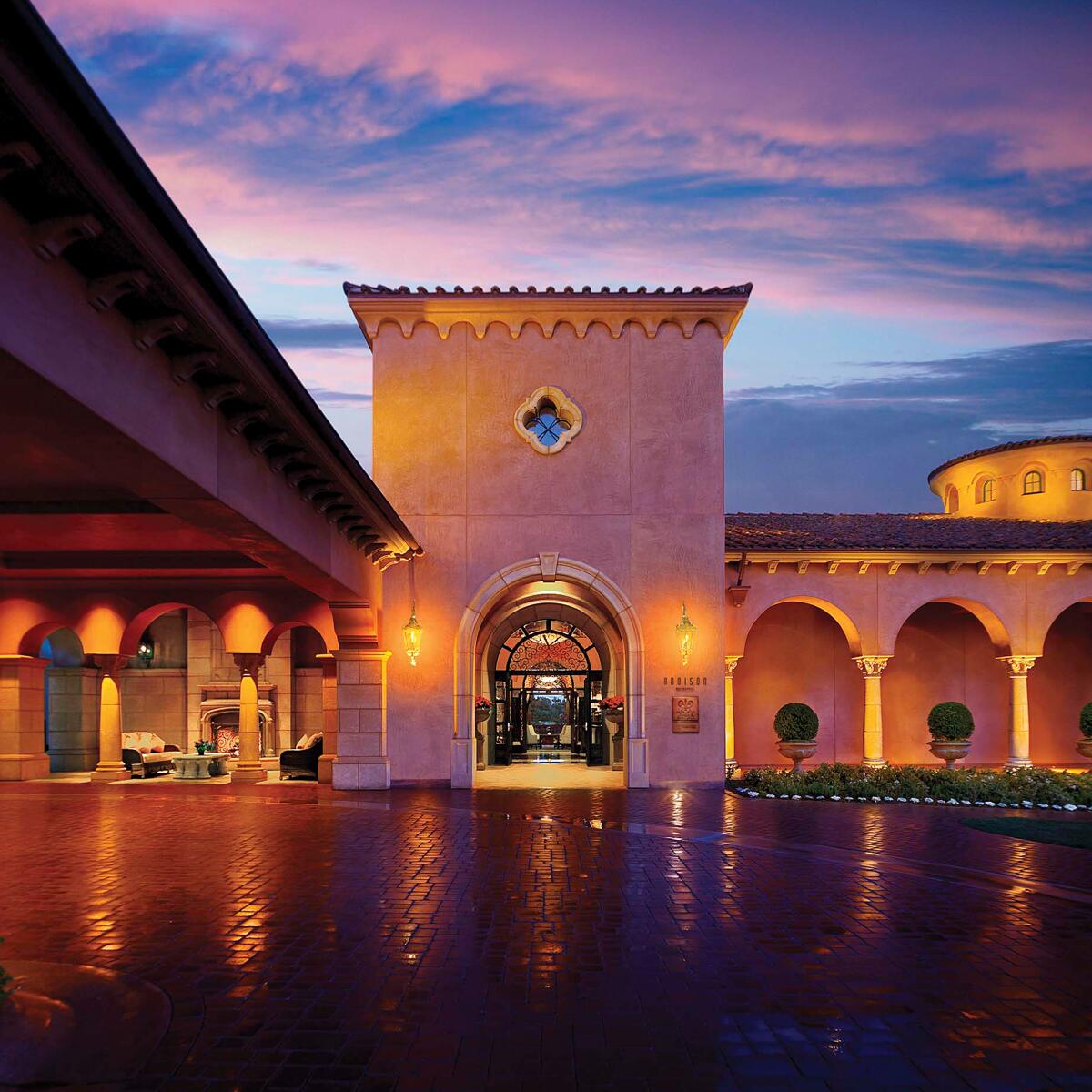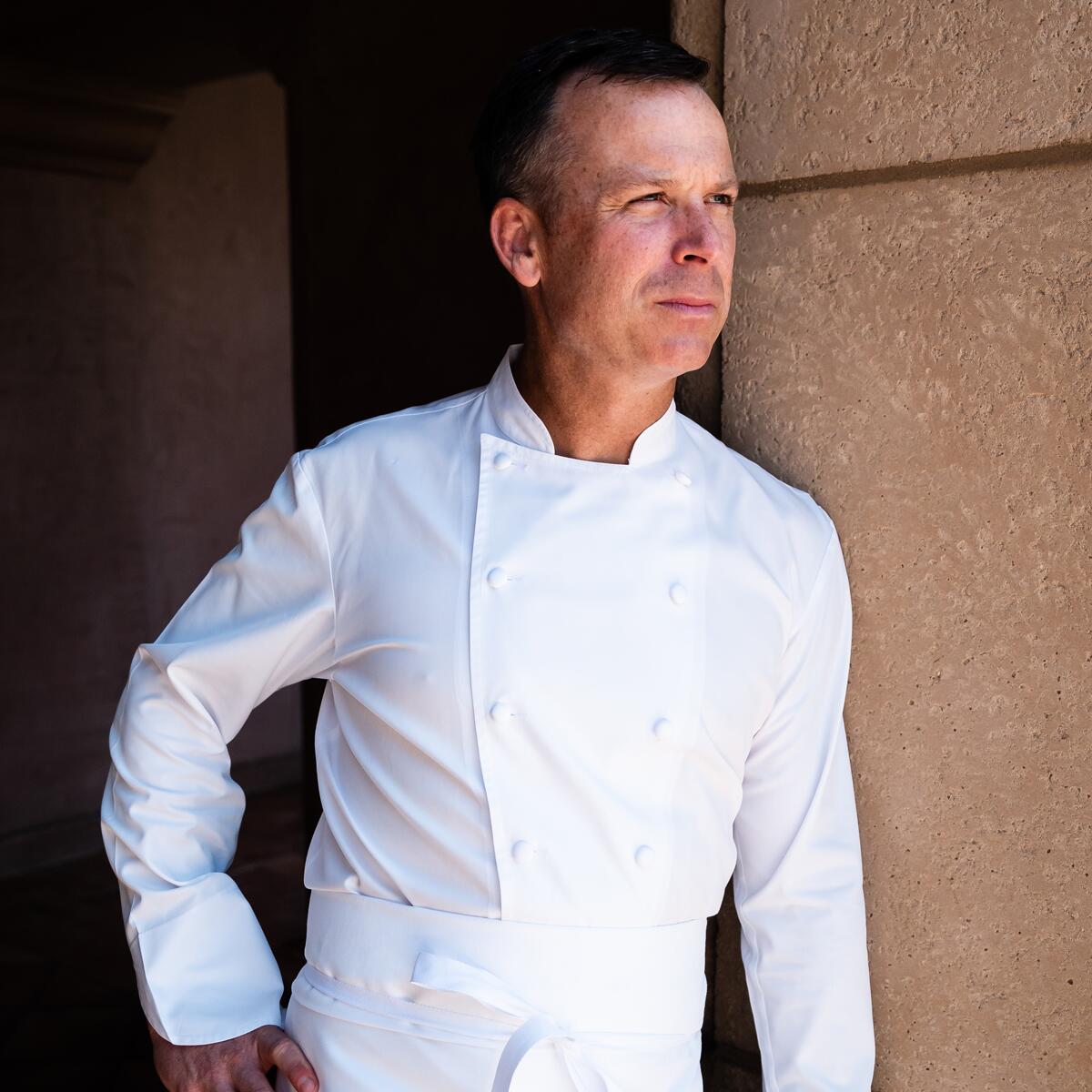An outrageously gorgeous, outrageously expensive meal is better than just about anything else in the catalog of pleasures.
It’s a reason to fast, to save your pennies, to fling yourself off to the farthest far-flung places, and to drop the equivalent of rent money on three hours of wanton, craven gorging.
But for all you out there who collect Michelin-starred meals like they’re baseball cards, who treat James Beard Awards as if they’re Nobels, who furiously veer a thousand miles off course to hit up a 50 Best establishment, I have news for you: you’re eating your fancy-schmancy meals wrong. Or, at least I am, according to Chef William Bradley, who wields his cheffery at Addison in Del Mar, California, and is the proud recipient of a shiny new Michelin star.
My Mistake-Prone Meal
Del Mar, a sleepy town 20 minutes north of San Diego that’s known for pricey homes and a high-class race track (you know, big hats and mint juleps), is hardly heralded as a culinary destination, especially to those in the up-turned-nose crowd. And yet, Bradley is hoping that as Addison was the only recipient in the southernmost region of Southern California to be knighted by Michelin in their recently introduced statewide guide, his restaurant will turn that around. Prior to the California guide, the French tire company had been focusing solely on Northern California.
Recommended Fodor’s Video
“When the Michelin guide came to San Francisco and Wine Country,” Bradley tells me, “they named only one three-starred restaurant. And now, there are seven. So, let’s watch [the food scene] grow down here.”
The restaurant sits on the grounds of the Fairmont Del Mar Hotel, though is far enough away from the property to withstand the often misplaced pejorative of “hotel restaurant,” which to so many conjures memories of lukewarm buffets and over-cooked eggs benedict. The hotel itself is a little too reliant on a romanticization of Italy—gilded mirrors, paintings of gondolas, cypress trees—but is a far cry from the gaudy Italian fetishization in Vegas, or worse, Trump Tower.
The Old World inspiration continues at the restaurant, not in décor (Addison is quite beautiful), but in service, where grand showmanship exists as something of a spectator sport. The staff moves rapidly about, accurately predicting every move by every guest. Servers materialize like lurking ghosts, seemingly emerging from the wall or the ether, smiles wide and eyes bright. When they pour the water or serve a course, they do so in a single sweep, even for a table of 10, each of them choreographed as though they were a line of Busby Berkeley dancing girls.
Of course, this is by design. Upon arrival at Addison, the first person to greet you—whether it be the valet or the maître-d’—secretly affixes a number to you on a scale of one (frazzled) to three (relaxed) and communicates this to the rest of the staff.
“Everyone has different reasons to come to a restaurant like this,” says Bradley. “Our job is to really read the guests.” Most of the time, they arrive at a three. “They’re already excited. So, we make sure we just hold them at that. That might mean we back off a little bit and allow them to continue to enjoy.” Those at a one—those who show up late or seem stressed out or who may be on an intense phone call—they’re pampered a bit more. “We try to get them to a three.”
…[W]ine glass in one hand, fork in the other, [I] felt every bit like Robert Baratheon before that wild boar gutted him wide open.
I was pegged at a three. They were right. I was happy. I sat in my chair, elbows perched on its arms, wine glass in one hand, fork in the other, and felt every bit like Robert Baratheon before that wild boar gutted him wide open. I grew fat on the Willy Wonka wonders that Chef Bradley sent from his kitchen. Swallowing each bite, with barely a chew in between, I downed the Alaskan king crab with coconut, Thai basil, and passion fruit; I gobbled the wild sea bream with artichokes, bottarga, and tapenade; I inhaled the A5 Wagyu with maitake bouillon and sauce Japonais. I ate every crumb placed before me, even the Parker House rolls. And I ignored the water, instead guzzling each and every glass of wine poured for me (and there were nine), sometimes before the sommelier even finished his description of the terroir. Bacchus ain’t got nothin’ on me.
It was indeed a glorious feast. I was happy. Until the next morning—that’s when I woke in typical misery.
Apologies to the Chef, I Overindulged
I slept terribly. Indigestion pummeled me. My head throbbed. I held a general feeling that I was an engorged tick who’d had one drop of blood too many. At 10 a.m., I met Chef Bradley in the lobby. I told him I was in a bad way—I may have used an expletive to describe exactly how I felt. And as the words fell from my mouth, I knew I’d stepped in that same expletive.
“It’s not your food, Chef,” I said hurriedly, apologetically. “No, dinner was incredible! But, I always feel this way after a tasting menu.”
I told him of my many exploits of feeling ill after exorbitant meals—sometimes even during. In Europe, I once ate so much at a three-Michelin-star restaurant that I had to run to the bathroom mid-meal to, well, how to put this delicately, pull a Mr. Creosote.
He took it in stride and we sat down. Bradley is handsome and confident, but perhaps his defining trait is an otherworldly, Zen-like calm. He’s the antithesis of the clichéd shouting chef who hurls insults as angrily as frying pans. He’s been doing this for a while—Addison opened in 2006—and he wasn’t always so placid. The combination of fatherhood and meditation has mellowed him.
“Chefs are all emotional,” he says. “We all go through that little period—that window of pure emotions. But that period doesn’t always make for the best of circumstances.”
After what I’d said, I was grateful to meet him now rather than during that period.
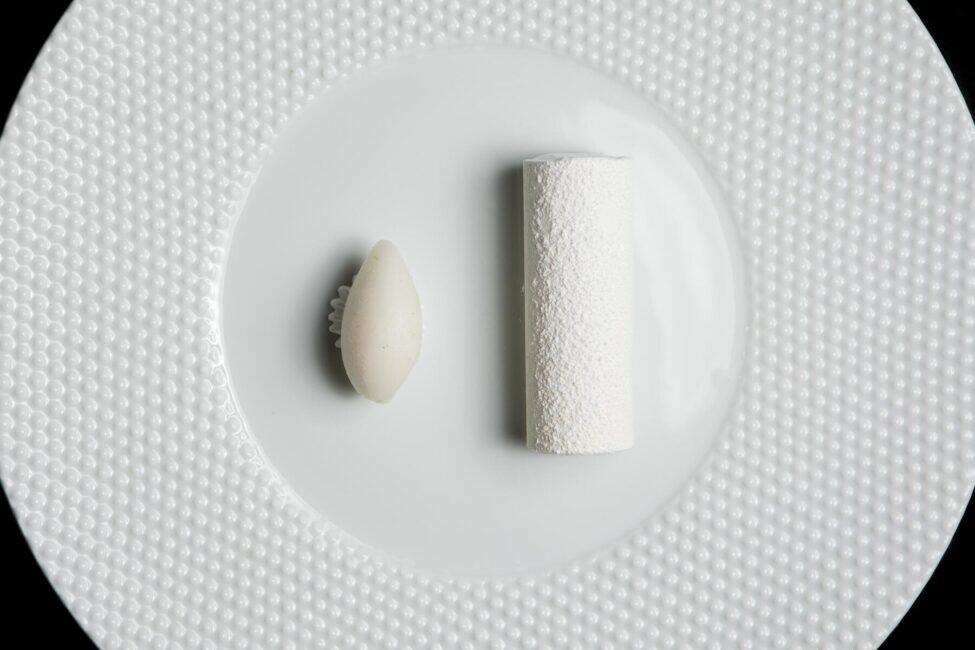
The Invention of a Stove Chef
Bradley grew up in these parts but without an interest in food. “Most kids growing up back in the ’70s and ’80s in the States didn’t have the best of chef parents. It’s changed now—kids are very well versed in food and cooking.” He describes his own parents as terrible cooks, whose regular staple was spaghetti made from dried pasta. “There aren’t these great meals that I remember.”
In fact, growing up, he never had a true culinary a-ha moment—that lightning flash that turned him from mere mortal to aspiring chef. Anthony Bourdain recalled it happening while eating a raw oyster, which he said tasted of the future.
Looking back, Bradley says, “It could have been a lot of things. Maybe a simple pozole dish made at a Hispanic friend’s house when I was a kid—that would be like, wow. There was clarity and the love of food there. Maybe that could have been the a-ha moment. I just don’t know it.”
All he ever wanted was to cook well and get that Michelin star. Now, all he wants is to add to his constellation.
For someone without a throbbing culinary yearning, it was purely accidental that he ended up dedicating his life to food. He yearned instead to be a fashion designer and somewhere along the way ended up in the kitchen rather than the design studio. When asked why, all he says is, “You know, I never really thought of that. The cooking thing was more easily available to me.”
But in the end, in Bradley’s mind, the two careers are somewhat interchangeable. “They’re exactly the same. Most people don’t give it enough thought—[Joel] Robuchon did by calling his restaurant Atelier. But, think about it, there’s haute cuisine and haute couture—you have seasonal product and materials and then you showcase your seasonal menu to these people who want to experience it. It’s exactly the same.”
He avoids the trappings of other chefs of his caliber—there’s no interest in televised fame or the expansion of an empire. “I’m a stove chef,” he admits. “I’m there all the time. And the restaurants where the chefs are there all the time, they’ve got a lot of soul.”
All he ever wanted was to cook well and get that Michelin star. Now, all he wants is to add to his constellation. And also, for his guest to enjoy what he’s serving up—which is why it’s so damn important to follow the rules for eating his meal or any other meal of this caliber and grandeur.
And that’s why he gave me his five rules for eating an epic tasting menu.
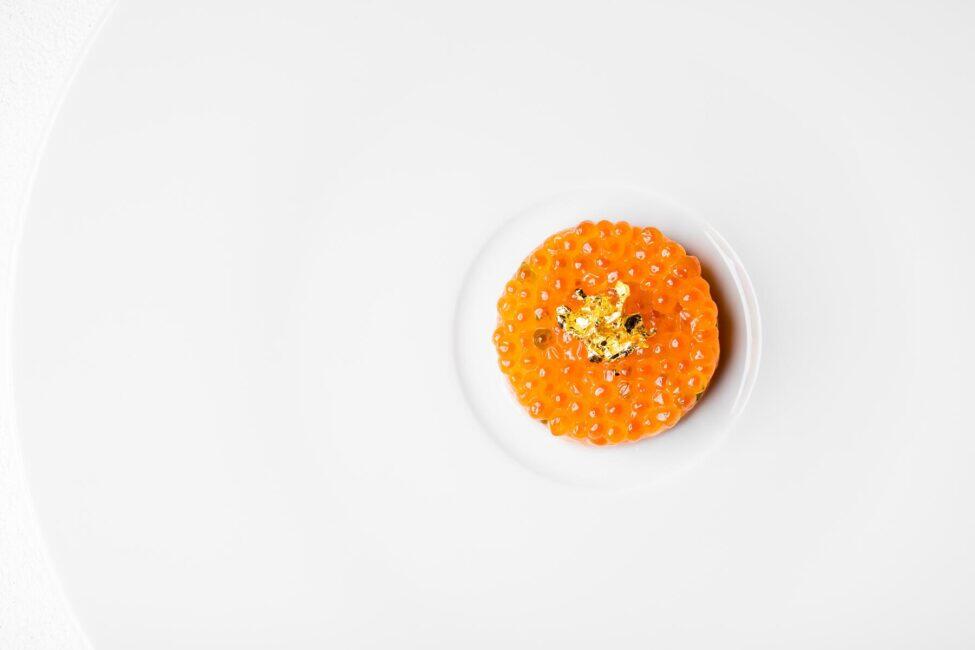
Rule #1: Don’t Hit the Bottle Pre-Dinner, You Lush
All too often in a meal like this, there’s a welcome cocktail. Perhaps you’ve arrived early and waited at the bar. Or, maybe, the restaurant’s mixologist simply wants to display their own razzle-dazzle while you wait for the main event. Or, maybe you were sitting on an Amtrak train slowly zooming down the coast to Del Mar and wanted to pass the time with a gin and tonic or two. Whatever your excuse may be, avoid it all costs.
The reason, says Bradley, is simple: endurance. You’re about to run a food marathon and engulf a week’s worth of calories in the span of two hours. Any pre-partying will only pack on additional, unnecessary calories. It pains me to say this, but in this circumstance, booze is your nemesis. You should even beware your sommelier, which brings us to the second rule.
Rule #2: Wine Pairings Will Be Your Downfall
Those dastardly wine pushers may promise you marvels from around the globe, but think of how much alcohol you’re actually consuming in a pairing. (To be fair, Addison’s somm is hardly a pusher, but rather a lovely and jovial man who’s absolutely brilliant at his profession.) Chef Bradley’s menu runs 10 courses long, and almost every single one of those dishes is accompanied by a shiny new glass of wine. Though some somms may pour a half glass, there are others—Addison’s included, God bless him—with a heavier hand. If you do the math, you’ll end up downing at least a bottle of wine to yourself at a meal this size.
So, what should you do? After all, the idea of a tasting menu without wine is so abhorrent that only a criminal mind would conceive of such a thing. Bradley offers the solution of ordering a bottle of wine for every two people—that’s about two glasses a piece for the night. The sommelier usually has a vin carte thicker than the Bible, so surely there’s a single wine that’ll make you happy.
Rule #3: Bread Is a Weapon of Evil
Bread is delicious. Bread is also the enemy. It’s the despot of dinners! The tyrant of the table! The fascist of feasts! It lures you in with false promises in the guise of a cloud of gooey warm goodness, but then, faster than you can say “the Nazi invasion of Poland,” it will conquer your stomach and occupy your gut.
The main reason a restaurant like Addison serves it is because it makes people feel good and happy. But that happiness is fleeting—come the morning, you’ll be screwed.
Rule #4: Water Is Your Only Real Friend
Wine isn’t the only thing that you should be swigging at dinner. As boring as it may be, I’ll begrudgingly admit that water does have some merits. Yes, it prevents you from shriveling into a loathsome corpse, but it also helps with digestion. It breaks down those delicious morsels into something your body can handle.
Rule #5: When You Think You’re Done Chewing, Chew Some More
And the last rule, according to Bradley, is to keep that jaw flapping. Chewing does the work so your stomach doesn’t have to. The less you chew, the greater the task it is for your digestive system to break everything down and properly absorb it. Though some experts say 34 chomps is the magic number, Bradley says that 20 is a pretty solid number to live by.
A Scientific Experiment: Testing Chef Bradley’s 5 Rules of Haute Cuisine Gluttony
I’m no scientist, but I’m nothing if not a thorough reporter of facts—I simply couldn’t live with myself if I were to share Bradley’s advice without first testing it myself. I chose a Los Angeles establishment for my experiment, which likewise was recently awarded a Michelin star—Ludo Lefevbre’s Trois Mec.
I entered the restaurant feeling confident. I’d remained completely sober beforehand, drinking only water all day. But then the somm arrived. Cursed devil! Would I like the wine pairing? Well, I thought, the wine pairing is quite small—only six. And, in looking around, the somm hadn’t been an overzealous pourer. I was bargaining—the addict’s method of acceptance. I said yes, bring me the pairing! Ten minutes in and already I’d failed. Sorry, Chef Bradley.
“No!” I shouted [at the bread]. “Back ye wretched yeast beast.”
There were three light courses—melon shaved ice, mustard crème brûlée, and a crispy tapioca. And then, the devil’s loaf…the bread. “No!” I shouted. “Back ye wretched yeast beast.” But it looked so good. So warm. So gooey. I ate it. Sorry, Chef Bradley, I was powerless.
But I kept that water coming. I ordered not one, not two, but three bottles of over-priced fancy water. I drank it between meals, between glasses of wine, between bites. Oh, the bites. Let’s talk about these bites. Does it really have to be 20, Chef Bradley? The food is too good to wait so long between bites. How about 15? I tried that for a bit. How about 10, Chef Bradley? I tried that for a bit. By the fifth course, I was back to swallowing it whole, barely a bite in between. Sorry, Chef Bradley.
By the end, I slumped in my seat. I didn’t go full Creosote, but lying in bed afterward I felt like I should have—and come the next morning, I wish I had. There’s a popular misconception that the Roman elites gathered together after feasts in a vomitorium where they would collectively empty their churning bile-soaked guts, all to make room for more. This is false, but I think I would have fared well in this Ancient Rome of Make Believe.
Look—I’m a glutton. I like my food and I like my drink. I like Chef Bradley’s food. A lot. But I don’t think I like his advice as to how to eat it. I want to eat my fancy meals wrong. I believe some food is worth suffering for. And Addison’s a meal worth an entire next-morning of pain.

